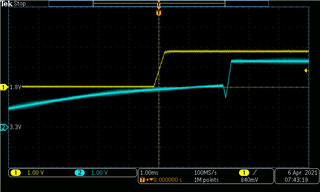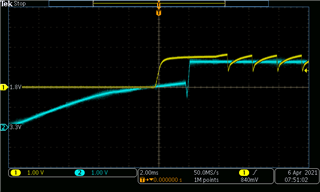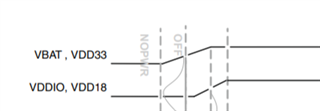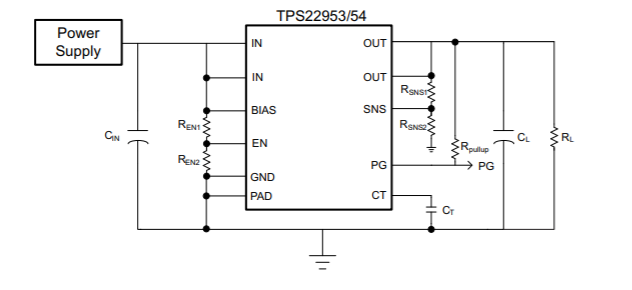Other Parts Discussed in Thread: TUSB1210, TPS22953, TPS22954, TPS22951
I am using the TUSB1210 with a Zynq XC7Z010. There is good information on sequencing the 1.8V rail for VDD18 and VDDIO after VBAT/VDD33, which is the opposite of what the Zynq system provides. I tried using the TPS22917, but it appears that the load switch is oscillating on and off. When I short Pin1 and Pin6 together, the TUSB1210 is able to start up with no problem. Is there a recommended load switch design for the TUSB1210? Also, it seems like the TPS22917 does not have a well-defined turn on/off point or hysteresis, so probably I need a part that has a well-defined turn-on voltage? The TPS22917 allows the Output to come on before the 3.3V rail is well established because I didn't use a resistor-divider.
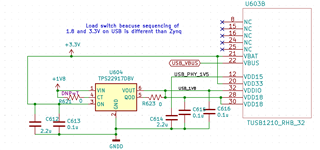
With TPS22917 in place:
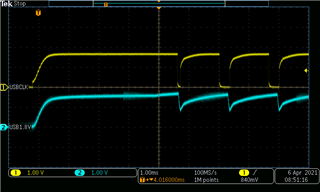
With TPS22917 Pin1 and Pin6 shorted:

TPS22917 delays the USB_1.8V but not enough, because the 3.3V rail rises slowly compared to 1.8V, and there is no resistor-divider and no tightly controlled turn-on voltage.:
